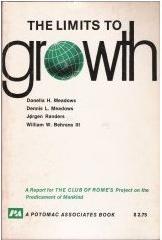Revisiting “Limits to Growth” 49 Years After It Was First Published
- NPG
- September 14, 2021
- NPG Commentary
- 0 Comments
Scenarios From “Limits to Growth” Can Change But Only If We Do the Work Today
Background: The book “Limits to Growth” was published in 1972. Long hailed as groundbreaking, the study used computers(!) to model several possible future scenarios. The team of MIT researchers then shared their prediction of the two most likely to happen scenarios for the world.
The Theories: A LiveScience article describes the first predicted outcome, referred to as the Business as Usual (BAU) scenario, as a future where “the world’s economic growth would peak around the 2040s, then take a sharp downturn, along with the global population, food availability, and natural resources.” The BAU would not necessarily end the human race. Still, it would be a significant turning point for society, as populations worldwide experience a drop in their standards of living, possibly for decades. The second prediction, called Comprehensive Technology (CT), imagines a future in which “technological advancements help reduce pollution and increase food supplies, even as natural resources run out.”
Renewed Interest: Gaya Herrington works as the Sustainability and Dynamic System Analysis Lead at KPMG and elected to conduct this research on her own time as an extension of her work towards her Master’s thesis at Harvard. Talking about the project, Herrington says: “Given the unappealing prospect of collapse, I was curious to see which scenarios were aligning most closely with empirical data today. After all, the book that featured this world model was a best seller in the 70s, and by now, we’d have several decades of empirical data which would make a comparison meaningful…So I decided to do it myself.”
Research Discovery: A Vice article summarizes Herrington’s findings, noting: Although both the business-as-usual and comprehensive technology scenarios point to the coming end of economic growth in around ten years, only the BAU scenario “shows a clear collapse pattern, whereas CT suggests the possibility of future declines being relatively soft landings, at least for humanity in general.”
Conclusion: Data illustrates that our decisions within the next decade will determine which outcome, Business-As-Usual or Comprehensive Technology, will likely occur.
NPG hopes people all over the nation think deeply and courageously about what they want for the future of this country. Envision a world full of too many people consuming too few resources to sustain any future generations. Now envision a world where we choose differently, raise smaller families, consume less, and preserve natural space and resources for future generations. NPG believes if we work together to slow, halt, and eventually reverse population growth, we, as a society, will be well on our way to a sustainable future in a world that provides abundantly for its inhabitants.
To read more about population size and growth, including the sources of growth and its many consequences, please see our Forum paper series, here.
To learn more about population in your state, please click here.
Help us continue to release information such as this by making a donation today!
| [WD_Button id=18412] |
